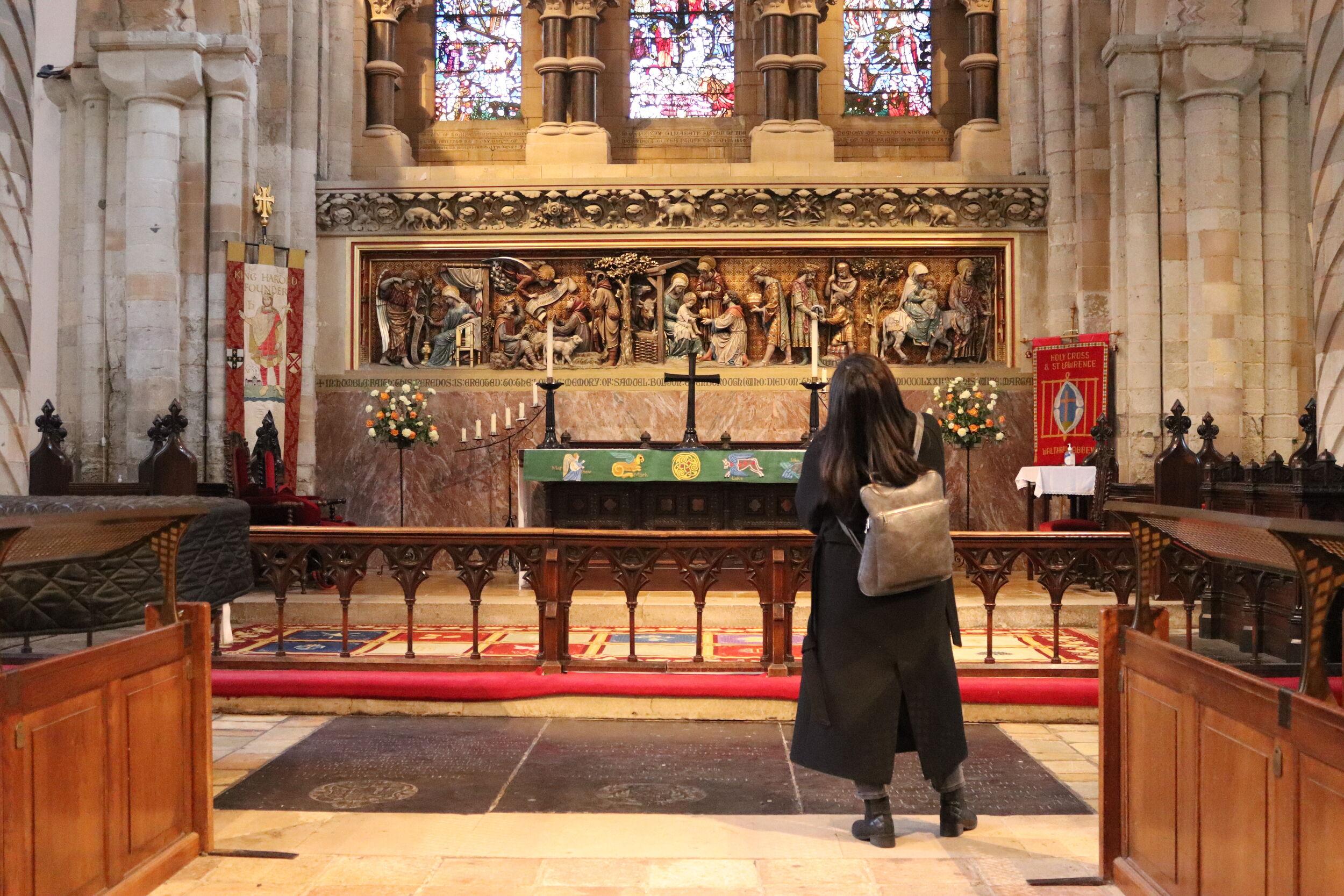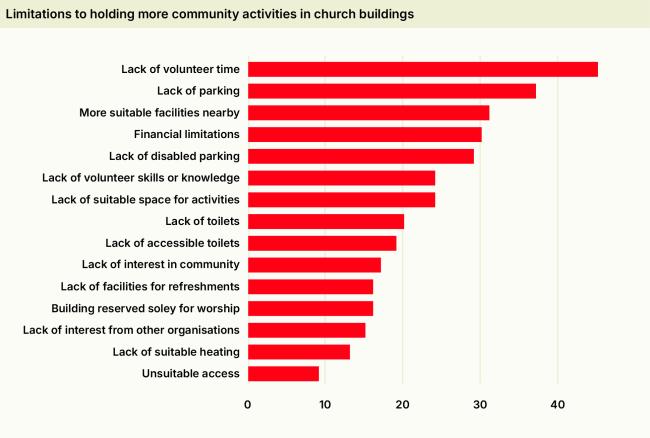
Barriers to growth and resilience
The National Churches Survey shows that churches are not short of vision. Asked what prevents them from doing more for their communities, churches pointed to obstacles in resources and infrastructure. Some barriers, like finance and volunteers, could be strengthened with the right support, while others, like facilities, space, and parking, require sustained investment and are harder to put in place. Together, they explain why willing churches can often find their ambitions held back.
Volunteers
In 2010, 22% of churches said that “lack of volunteer time” limited their ability to provide more community activities. By 2025, when asked directly about limitations to doing more, almost half (45%) pointed to lack of volunteer time as a major barrier. In a separate question, when asked what would help churches do more, 70% said that ‘more volunteers’ would be the single most helpful form of practical support. Though the wording and framing have shifted in the Surveys, a trend can be seen here, as what was once a background worry has become one of the single greatest obstacles to growth, showing that the volunteer backbone of church life is a vital resource.
Financial limitations
Nearly a third (30%) of churches say financial limitations prevent them from doing more, compared with 24% in the 2010 Survey. Congregations and local people remain the bedrock of philanthropic support for churches: 77% of churches rely on local giving, 54% on local fundraising events, and 50% on gifts in wills. Yet nearly a third (31%) are now drawing on church reserves to cover basic costs, a cycle that cannot last indefinitely.
The Survey also highlights clear ways forward, as churches most often identify more financial support (62%) as the key to unlocking their capacity to serve their communities. However, those with strong finances and skilled volunteers are more likely to access external grants, while smaller churches with fewer resources risk being left behind.
Space and facilities
Lack of suitable space remains one of the most common barriers. In 2025, 24% of churches reported that space constraints limit their ability to do more. The problem is sharpest where no hall is available – 41% of churches without a hall cited ‘lack of space’ as a limitation, compared with just 11% of those with one.
Parking and facilities increase the challenge. In 2010, 21% of churches identified insufficient parking as a constraint. By 2025 this has worsened to 37% overall, with the highest levels reported in urban areas (45%) and rural ones (36%), with suburban areas at 32%. Accessibility is also a concern: 29% of churches cite lack of disabled parking as a limitation to wider community use, underlining how physical access issues extend beyond the building itself. For many communities, particularly rural ones, a church without parking or suitable facilities is a church that simply cannot expand.

